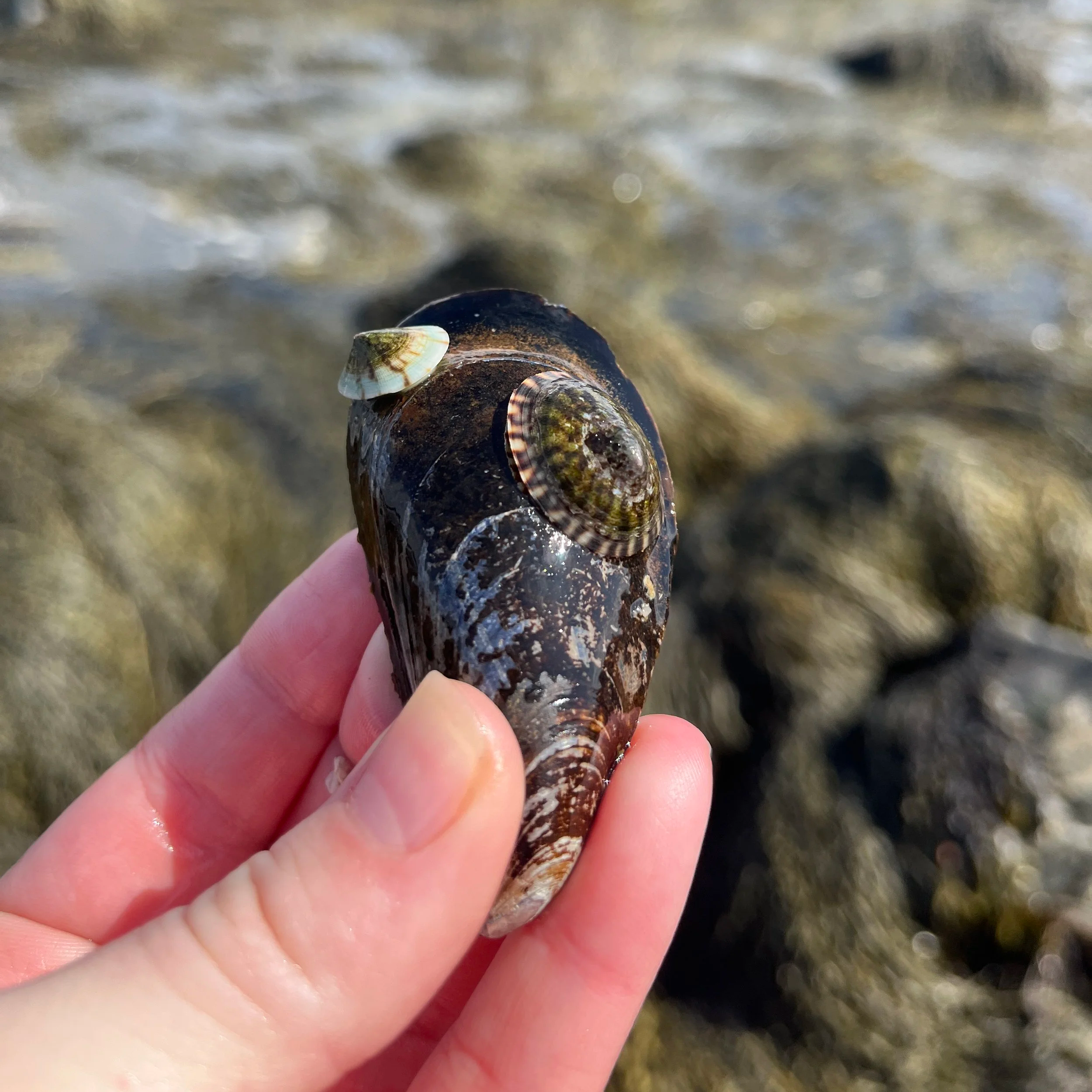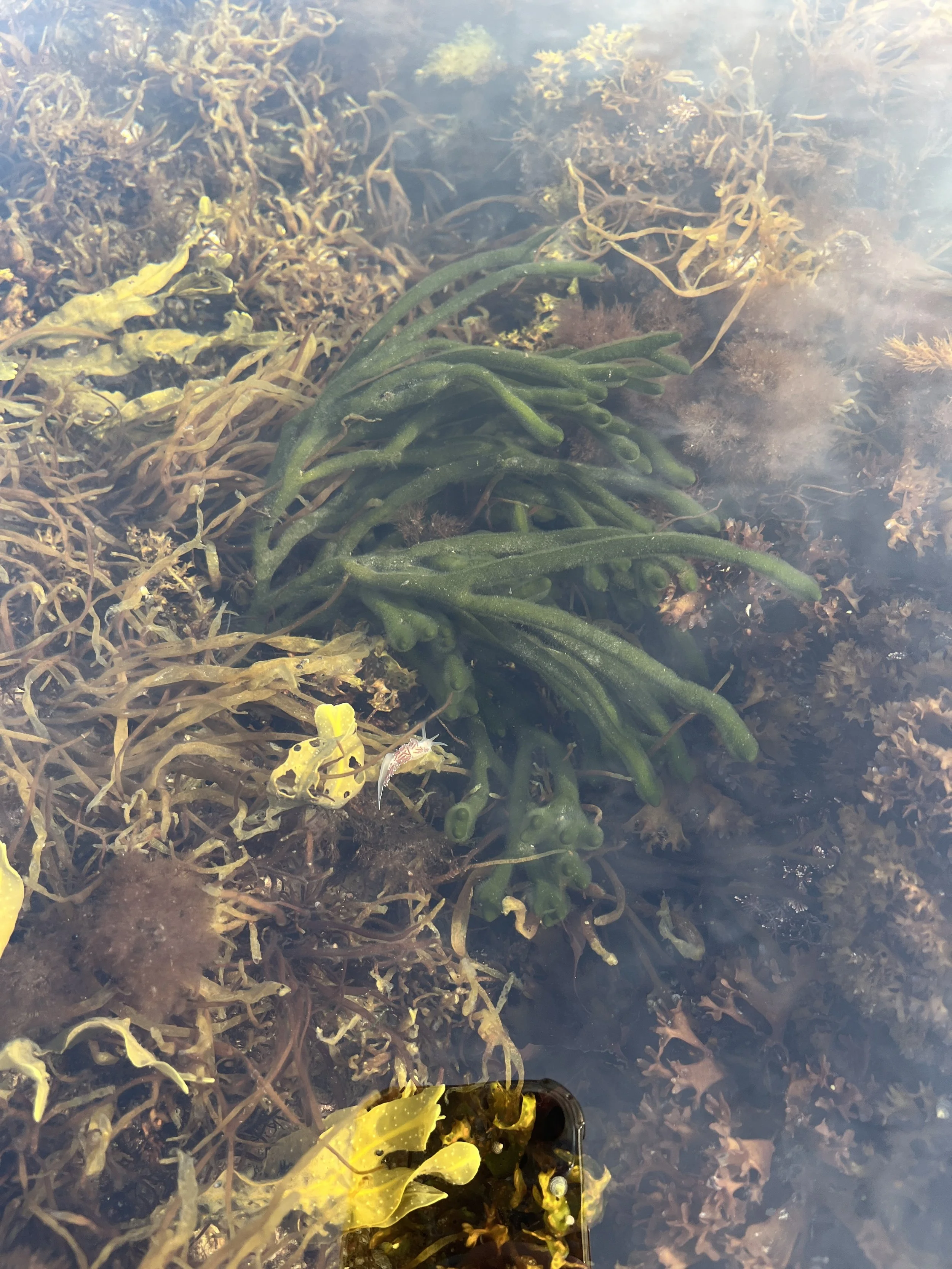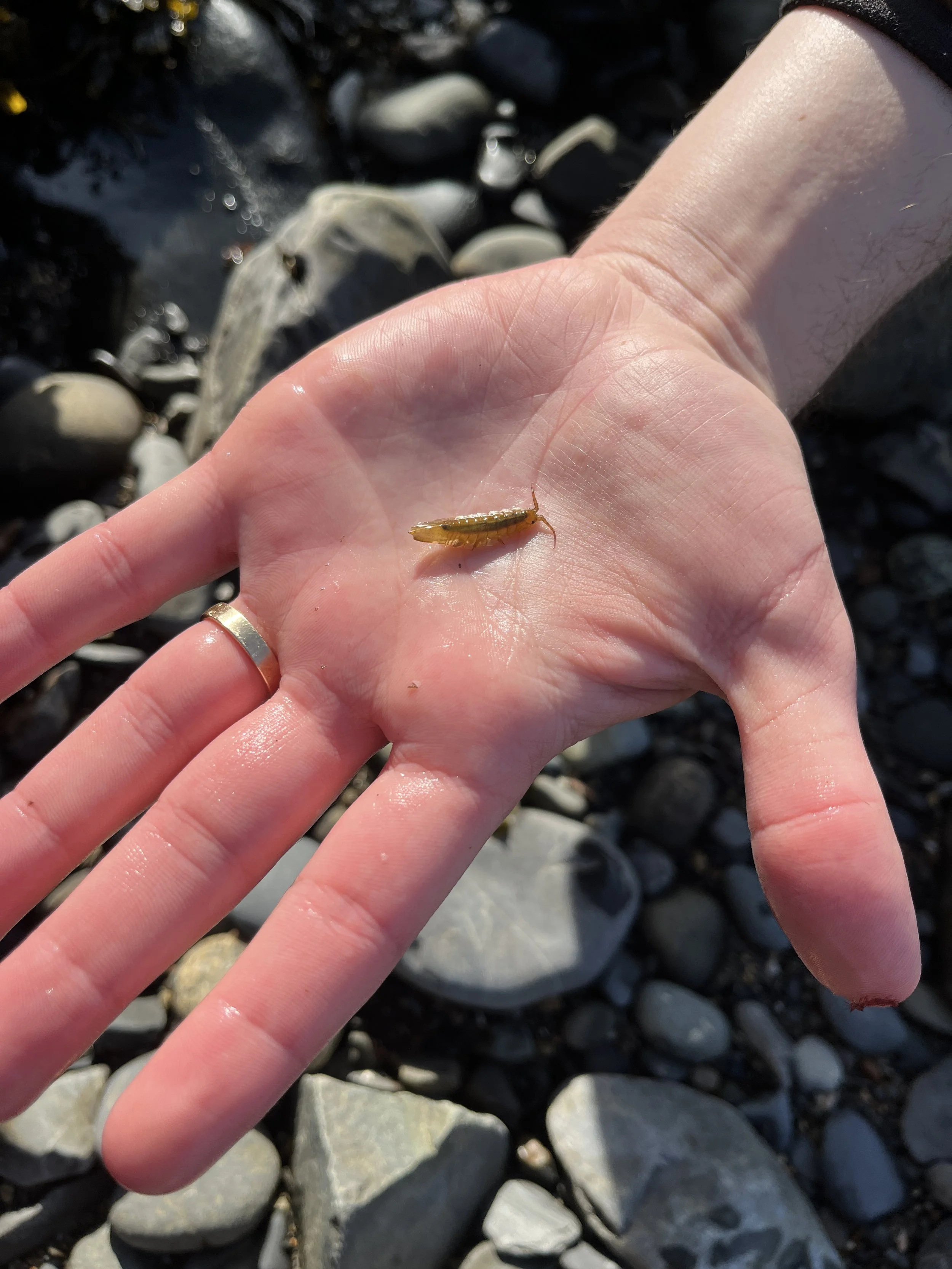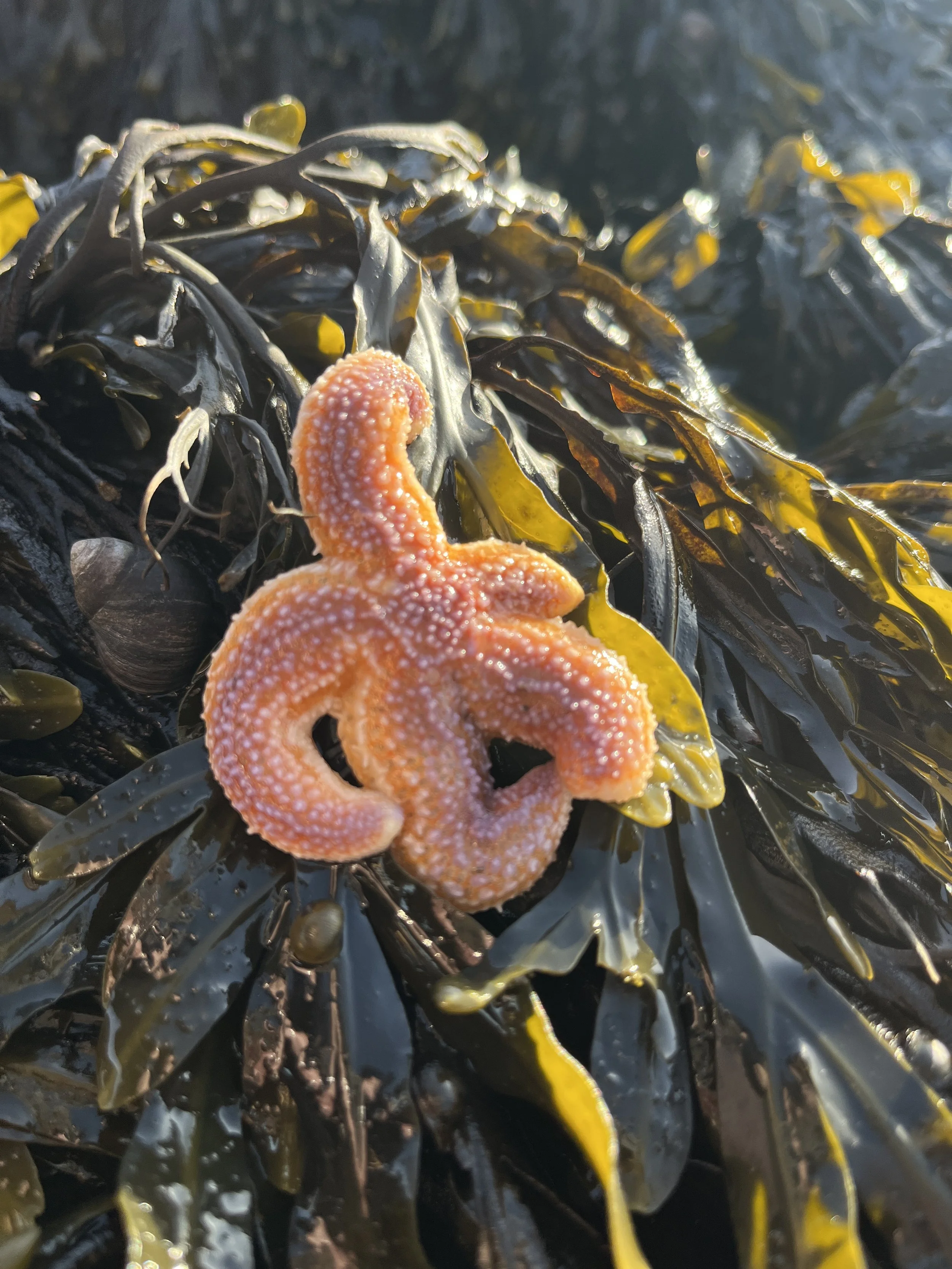
Guided tide pooling with Turning Tides ME
Connecting people, both local and from away, with Maine’s incredible rocky coast, the critters that live on it, and marine biologists who study it.
What is guided tide pooling?
Explore Maine’s coast with an insider.
Booking a guided tide pooling session with Turning Tides is getting a crash course in Maine’s marine ecosystem. It’s having an hour to ask a marine biologist anything. It’s an opportunity to learn about discreet marine life you may have never even noticed otherwise.
Guided tide pooling is for people of all ages and backgrounds, and can make for an unforgettable corporate team outing, school field trip, birthday party, or lowkey afternoon with your family and friends.
Meet the founder
Aubrey Jane
Aubrey has been studying marine and aquatic critters for the past decade. Her research has led her to immortalize blue mussels in microscope slides, analyze Maine lobster to the molecular level, and spend countless hours on the hunt for invasive green crabs. Now she’s excited to take on the role of ‘tide pool guide’, sharing what she’s learned about New England’s intertidal zone with you.
What critters are waiting for you?
-

Tortoiseshell limpets
Testudinalia testudinalis
-
Sea slugs
Flabellina sp.
-
Cancer crabs
Cancer sp.
-
Isopods
Idotea balthica
-
Sea stars
Asterias sp.
-

Lobsters
Homarus americanus






